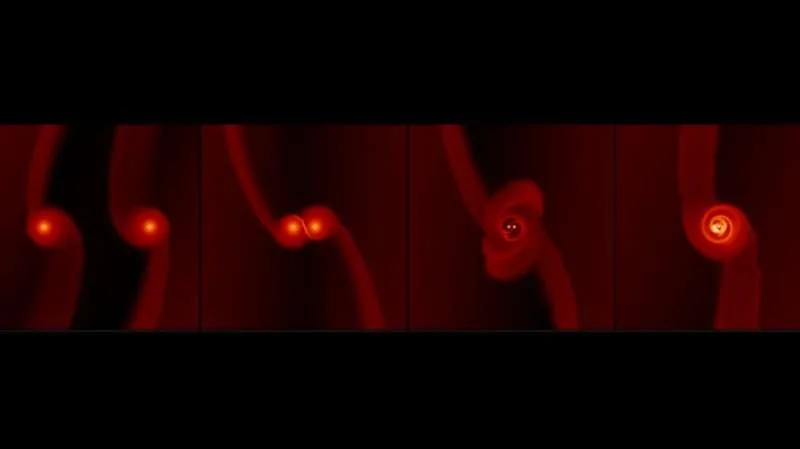Quasar disks may contribute to black hole collisions
- July 6, 2023
- 0
A new study following the discovery of gravitational waves sheds light on the environments that could cause black holes to merge. At the 2023 National Astronomy Meeting this
A new study following the discovery of gravitational waves sheds light on the environments that could cause black holes to merge. At the 2023 National Astronomy Meeting this

A new study following the discovery of gravitational waves sheds light on the environments that could cause black holes to merge. At the 2023 National Astronomy Meeting this week, the Ph.D. Oxford University student Connor Rowan.
The first gravitational waves, predicted by Albert Einstein in 1916, were detected on Earth in 2015. However, determining their origin in space remained an open question. The gravitational waves we observe can only come from pairs of large, high-density objects close together, such as black holes or binary neutron stars, to be detected at such large distances. More than 90 such species have been detected so far, but the primary astrophysical environment that allows these objects to get close enough to emit gravitational waves remains a mystery.
One possible environment where black holes can often merge is quasars. A quasar is a powerful active galactic core powered by a supermassive black hole. A dense disk of gas orbits the supermassive black hole at close to the speed of light, causing extremely bright emissions.
The interaction of stellar-mass black holes with the gas disk of a supermassive black hole is very complex and requires sophisticated computer simulations to understand. In a new study, a team of astronomers from the universities of Oxford and Columbia studied the behavior of such stellar-mass black holes embedded in the disk. The study suggests that stellar-mass black holes may be attracted to the dense gas disks of quasars and forced into binary systems by gravitational interactions with each other and with the gas in the disks.
The team performed high-resolution simulations of the gas disk of a quasar containing two stellar-mass black holes. The purpose of the simulations is to see if black holes fall into a gravitationally bound binary system and possibly then mingle with a disk of gas. These simulations use 25 million gas particles to simulate complex gas flows during collision and require approximately three months of computational run time for each simulation.

Simulations show that gas slows black holes during collision, so black holes that normally fly away from each other remain trapped in a gravitationally bound orbit around each other, while both in turn orbit the supermassive black hole. This is because of a combination of the gravitational force between them and the large gas flows in the disk and the individual “mini” disks around individual black holes.
Also, the gas’s direct resistance, similar to air resistance, plays a role when gas “eaten” by black holes in their path causes them to slow down. In response to the absorption of the black hole’s kinetic energy through gravitational interaction, gas is suddenly ejected immediately after the collision. This result is found in most simulations and confirms previous expectations that gas greatly facilitates trapping of black holes in bound pairs.
It was also found that the direction of the trajectory of black holes affects how they evolve. In half the retrograde binaries—binaries in which black holes spin against each other in the opposite direction of their orbit around the supermassive black hole—black holes can get close enough to generate significant gravitational waves and dissipate their orbital energies very quickly. waves. emissions, combined very sharply.
Research leader Rowan says: “These simulations address two main questions: Can gas catalyze the formation of binary black holes, and if so, can they eventually converge even closer? Both answers must be yes for this process to explain the source of the observed gravitational wave signals. needed.”
“These results are incredibly exciting because they confirm that black holes can evolve into supermassive black hole disks and could explain most, or perhaps most, of the gravitational wave signals we see today,” said Professor Bens Kocish, co-author of a study. scientific article. .
Professor Zoltan Hyman of Columbia University adds, “If a significant portion of events observed today or in the future are due to this phenomenon, we may see a direct link between quasars and the sources of gravitational waves in the sky.” , another co-author of the scientific study.
Source: Port Altele
As an experienced journalist and author, Mary has been reporting on the latest news and trends for over 5 years. With a passion for uncovering the stories behind the headlines, Mary has earned a reputation as a trusted voice in the world of journalism. Her writing style is insightful, engaging and thought-provoking, as she takes a deep dive into the most pressing issues of our time.